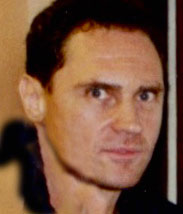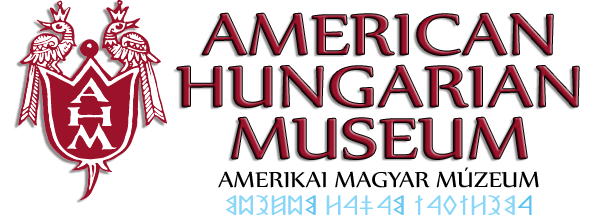
ISTVÁN KOSBOR
When my friend Kálmán Magyar invited me to have a show at the American Hungarian Museum, I thought it would be a good occasion to present a selection of my works of the last ten years I have spent in New York City. During this period the world, but the art-world in particular, changed its face dramatically. The free bohemian style of the 1980’s was replaced by a cooler and more commercial behavior. On my behalf, I had to quit the idea of creating large and time consuming artworks for a while because they were problematic to store and to carry around. Instead I started to concentrate on techniques easier to present, like photography and printing. Visitors of this show can see pieces from the time when I arrived in America to the very present. To better understand the meaning of the artworks, I enclose a few of my statements which were published at earlier exhibitions.
To my latest series I have given the title: „For God’s sake”.
Through the history of mankind and particularly in the societies of western civilizations God represented the most powerful personality who could be pleased by precious gifts and proper behavior. The character of the gifts offered to God represented the conception of the luxurious needs of that particular community. The poor could offer only simple presents like a piece of bread, a pigeon or basic tools, the prosperous could sacrifice large animals, precious metal objects and stones, even human beings on the altars of great pyramids and sanctuaries. Nowadays, the importance has been transferred from churches to the palaces and towers of the business world, and any offering can be replaced by little pieces of paper (cash or check). However the nature of goods purchased with money has not changed a bit, they still serve the very needs and desires of the human soul and body. Money can be exchanged for living space, vehicles, expensive food, clothes, jewelry, entertainment, even partners might be attracted to it.
Metals and precious stones are great attractions to the human mind since ages. These are materials hard to find and difficult to manufacture. Great and dangerous enterprises where undertaken to find them. Even today, when metal is produced in large quantities, most of us will be puzzled by the abundance when looking at a magnificent building covered with metal plates. Today couples are still exchanging jewelry upon engagement. These mysterious materials are symbolizing power and invulnerability therefore they are used as weapons and talismans as well. Precious metals and stones are ideal collectibles due to their high value for a relatively small volume and their unchanging character, a fortune easily transportable, wearable or hideable. I meditated a great deal about the peculiar secret: what sustains the constant desire of women to decorate themselves with jewelry. The softly swelling, gently sloping, warm skin surface meets with the mysteriously gleaming metals and the symmetrically cut, unmercifully brittle and cold stones.
New York, 2000
Many years ago I received a copy of the National Geographic magazine with an aerial photograph of Manhattan. It looked like a vast, regular, geometrical pattern. It seemed unimaginable that people could live there. Roaming the streets of New York, there is no trace of such a system, rather one does experience the total ignorance of rules; consistent connection of unsuitable things. Odd combinations of materials and surfaces are coming into existence accidentally; shadows, lights and dirt, they all take on a meaning beyond the limits of intentional planning.
There was a time when my attention was captivated by the order behind the sight of the surface – the great universal order. Nowadays however, my interest turned around and what catches my attention the most, is the appearance of the structure. Frequently this doesn’t show any relationship with the intended purpose.
A tiny piece of female underwear is capable of showing endless variations of faces as it falls down onto the floor, settling in dramatic formations. The features of the beloved person which we consider to know in every aspect, are capable to become unrecognizable in front of the camera’s objective.
New York, 1993
As far back as I can remember, I have been captivated by the secret movements which unfold behind the surface of things. I find the discovery of universal laws more stimulating than the scrutiny of unique traits and personal vicissitudes. When I read a „story”, it is not the tragedy of the character or the twists and turns of the plot that keep me riveted, but the equation that underlies the story, which is always in harmony with the dynamics of nature. These equations provide the framework for my own pieces.
I try to apply a method that emulates nature’s capacity to produce an endless variety of formations. I allow the basic components of my works to express themselves up to the limits of their potentials with out any bias or preference of my own. I try to re main passive, indifferent; I do not favor, I do not sympathize, I choose the participating characters in a manner that allows me to follow the conflicts in which they become gradually entangled. Their dissimilarity increases the tension, and at the same time their conflict serves as a metaphor of conflicts in general. Their forms of appearance refer to experiences about fundamental materials and objects of our environment but only on a highly common level. Metallic chunks, softly flowing and erratically meandering forms, semantically conscious or seemingly random configurations – all these represent different clusters of phenomena. Most of all, how ever, I am interested in the marginal regions of their collision, in the impalpable metamorphosis that occurs when the competing forms inter twine.
New York 1990
For a long time, I have been consciously aware of occurrences where things of diverse character come into immediate contact. What excites me in particular are the alterations in form and the new meanings that result from this kind of interdependence. Peculiar, unfamiliar qualities spring to life; something novel, unpredictable is born.
Each level of existence is comprised of entities struggling for survival. All elements of life, individuals, groups, societies, stand in relations to all the other participants. Their potentials, the source of their power, abide in their character. The confined space, which is available, favors their necessary, sometimes inevitable confrontation. Attraction, hostility, or apparent indifference engenders actions, constraints, and movements. Mysterious internal reactions and influences inspire those involved to provoke, surrender, or conform. Estrange mentor fusion, conception, cooperation or destruction, all lead to peculiar transformations. The resulting forms testify to a diverse chain of events. Destinies, prophecies, history can read from them: messages from past, present and future.
This is the idea, which I aim to model in the forced cohesion of different character-types. I construct peculiar movements, wrestlings, which are at times tragic, at others, entwining, coalescing, or simply interacting, depending on how my spontaneous emotions and unfold ing thoughts dictate them to be. I let the responding material arouse my open mind and guts.I do not make any preliminary drawings. I summon the themes, which I have amassed in response to my diverse surroundings and connections. I try to avoid „tried and tested”, accessible forms. I want to knead each and every component of my works from my innermost self. I aspire to keep my constructions at that border where natural and cultural forms only just separate to become general yet still unique, familiar but not commonplace. My method is more creative than analytical; as a result, the interpretation of my works will offer scant lighthearted amusement.
New York, 1989
István Kosbor was born in Budapest, Hungary. His father was a well-known puppeteer, his mother a dancer and choreographer. From his early child hood he wanted to be and artist. He lived in Pécs, a town 200 km South of Budapest; famous for art movements, numerous museums and one of the most significant modern and contemporary art collection in Hungary. Since early age he participated in advanced drawing and paint ing courses. He was one of the founders of „Visual Work shop Pécs”, a union of contemporary artists and educational studio. He at tended several solo and group shows at various places in Hungary and abroad. He also participated in folk dance movements as a per forming artist. He was teaching art and dance as well. In 1987 he settled down in New York City, since then he presented his artwork at several exhibitions.
American Hungarian Museum, No 69, 2000
